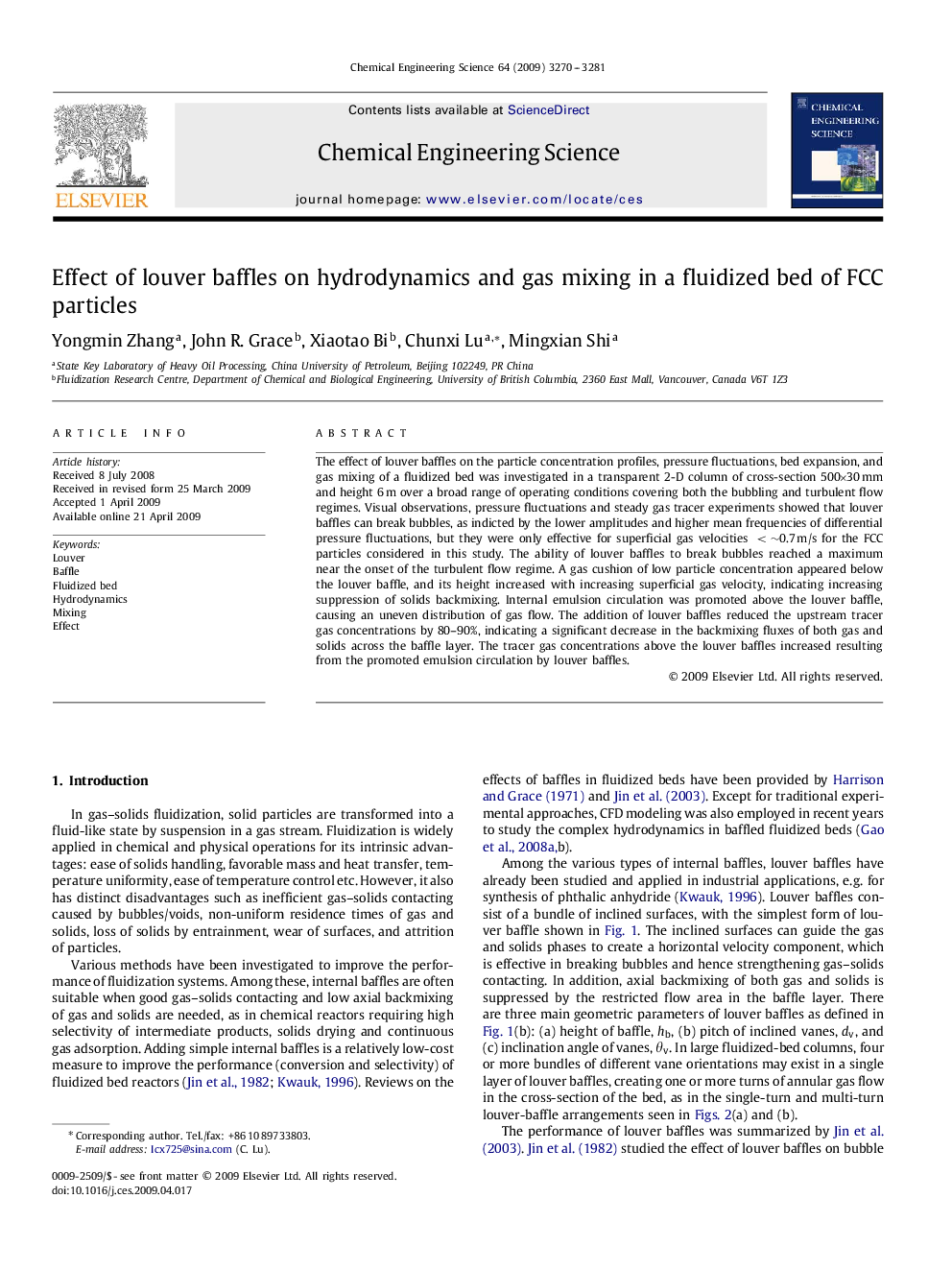| Article ID | Journal | Published Year | Pages | File Type |
|---|---|---|---|---|
| 157089 | Chemical Engineering Science | 2009 | 12 Pages |
The effect of louver baffles on the particle concentration profiles, pressure fluctuations, bed expansion, and gas mixing of a fluidized bed was investigated in a transparent 2-D column of cross-section 500×30 mm and height 6 m over a broad range of operating conditions covering both the bubbling and turbulent flow regimes. Visual observations, pressure fluctuations and steady gas tracer experiments showed that louver baffles can break bubbles, as indicted by the lower amplitudes and higher mean frequencies of differential pressure fluctuations, but they were only effective for superficial gas velocities <∼0.7 m/s for the FCC particles considered in this study. The ability of louver baffles to break bubbles reached a maximum near the onset of the turbulent flow regime. A gas cushion of low particle concentration appeared below the louver baffle, and its height increased with increasing superficial gas velocity, indicating increasing suppression of solids backmixing. Internal emulsion circulation was promoted above the louver baffle, causing an uneven distribution of gas flow. The addition of louver baffles reduced the upstream tracer gas concentrations by 80–90%, indicating a significant decrease in the backmixing fluxes of both gas and solids across the baffle layer. The tracer gas concentrations above the louver baffles increased resulting from the promoted emulsion circulation by louver baffles.
